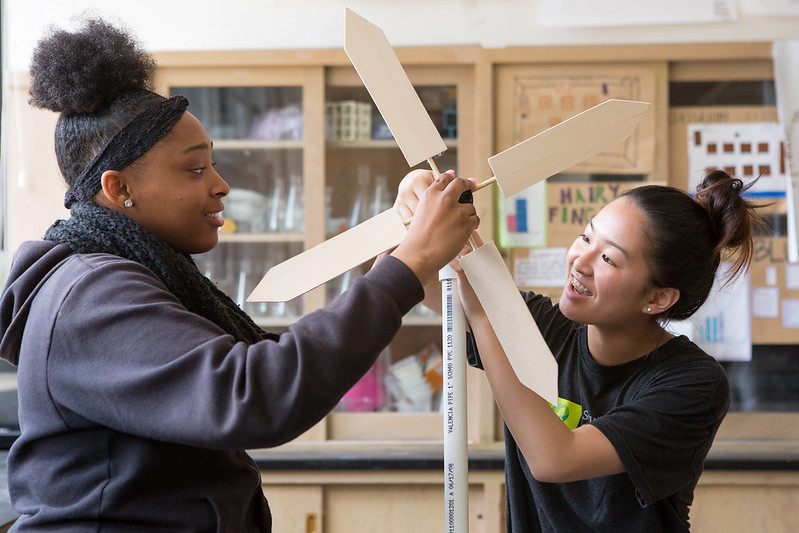
Education redesign efforts could accelerate under the widespread flexibilities and policy changes embraced during the COVID-19 pandemic. These efforts provide an opportunity to reimagine the implementation of these strategies to increase opportunities and supports for all students. Planning strategically for the future requires systems changes based on not only lessons learned during the current crisis but also on the evidence base for innovative educational strategies.
To support Region 1 stakeholders in these efforts, the Reimagining Education: Strategies for Innovative Systems Change paper series spotlights three innovative, evidence-based educational strategies that hold potential to transform student experiences, leading to additional choices, deeper engagement, and increased preparation for students’ postsecondary opportunities. These strategies are rooted in priority initiatives across the Region 1 states, and each paper in the series highlights existing work within the region while providing suggestions to accelerate the work.
Introductory Paper: Reimagining Education: Strategies for Innovative Systems Change
Explore an overview of the three innovative, evidence-based strategies highlighted in the series, including how they can be implemented in ways that connect and support each strategy.
Authors: Erin Huckle, Samantha LeVangie, Peter Tierney-Fife, Fred Bramante, and Tim Doak
Paper #1: Innovative College and Career Pathways to Advance Equity and Opportunity
Disruptions associated with the COVID-19 pandemic have introduced opportunities for PK–12 education systems to accelerate evidence-based innovations that may better prepare students to pursue their educational and career goals. Learn about three evidence-based strategies that, individually or as part of a system of pathways, can support students as they develop marketable workplace skills and prepare for postsecondary educational opportunities. These strategies include work-based learning, academically rigorous career and technical education, and opportunities for accelerated college credit.
Authors: Erin Huckle, Samantha LeVangie, Peter Tierney-Fife, Fred Bramante, and Tim Doak
Paper #2: Approaches for Assessing Student Learning
While the COVID-19 pandemic disrupted conventional assessment practices, it offers an opportunity to reconsider the purposes and types of assessment used to evaluate student learning and inform instruction. Cancellation of spring 2020 student assessments and the freezing of school accountability status gave many districts and schools an opportunity to use other measures to assess students during the 2020–21 school year through thoughtful approaches designed to fit new realities, such as remote and hybrid learning. Many teachers opted for more authentic assessment options such as student capstones, reflections, or portfolios. Competency- and proficiency-inspired approaches, which prioritize the substance of student work over seat time, complemented remote learning by providing flexibility for students who faced scheduling and technological hurdles. Concerns about unfinished learning focused renewed attention to formative assessment as a strategy to help teachers tailor instruction to students’ needs.
Parents, educators, policymakers, and other stakeholders can build on recent experiences and use these data to inform instruction – ultimately focused on promoting deeper learning, skill or competency attainment, flexibility in student progression, and personalization of learning. In this paper, readers can explore three broad and evidence-based approaches to assessing student learning: 1) competency-based and proficiency-based assessment, 2) authentic assessment, and 3) formative assessment.
Authors: Erin Huckle, Samantha LeVangie, Peter Tierney-Fife, Fred Bramante, and Tim Doak
Paper #3: Strategies for Student-Directed Learning
Student agency in the classroom, particularly opportunities for students to direct their own learning, changed significantly during the ongoing COVID-19 pandemic. School closures and social distancing rules limited opportunities for students to collaborate and participate in flexible, student-driven learning. On the other hand, remote and hybrid learning environments required many students to assume greater levels of responsibility and ownership over their education. Compared to the typical structures and rhythms of an in-person school, students gained more control over how and when they completed coursework, particularly coursework provided asynchronously. In some school districts, the pandemic also presented new opportunities for families and students to voice their input.
As the COVID-19 pandemic recedes, schools have an opportunity to incorporate and strengthen promising practices to promote student agency and ownership, which we refer to as student-directed learning. In this paper, readers can explore two promising strategies to promote student-directed learning: 1) personalized learning plans and 2) strategies to support student voice and choice.
Authors: Erin Huckle, Samantha LeVangie, Peter Tierney-Fife, Fred Bramante, and Tim Doak